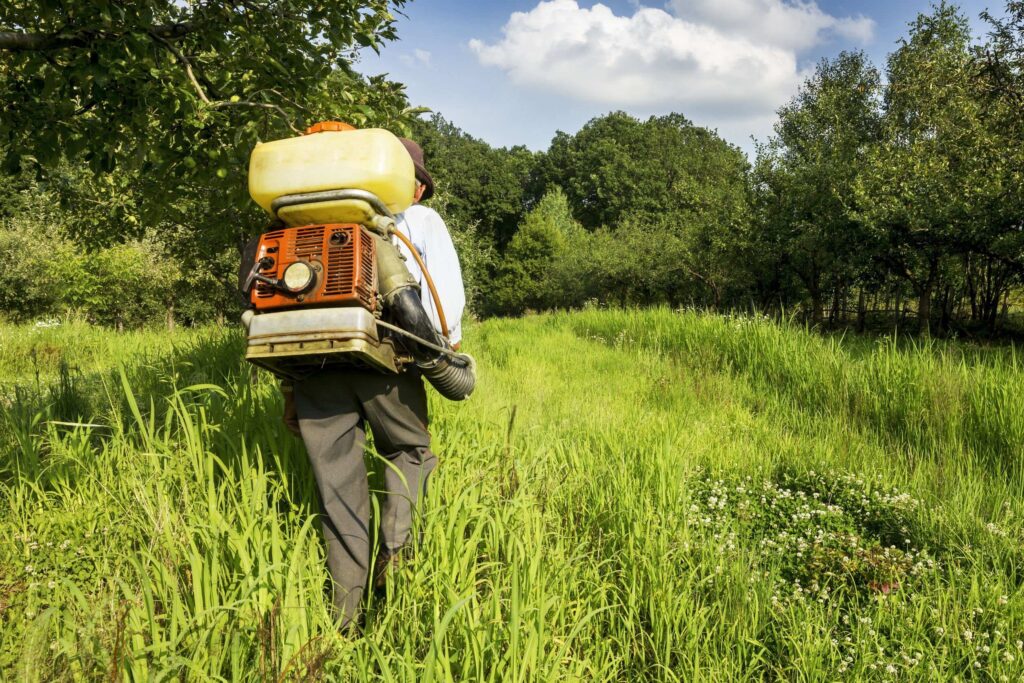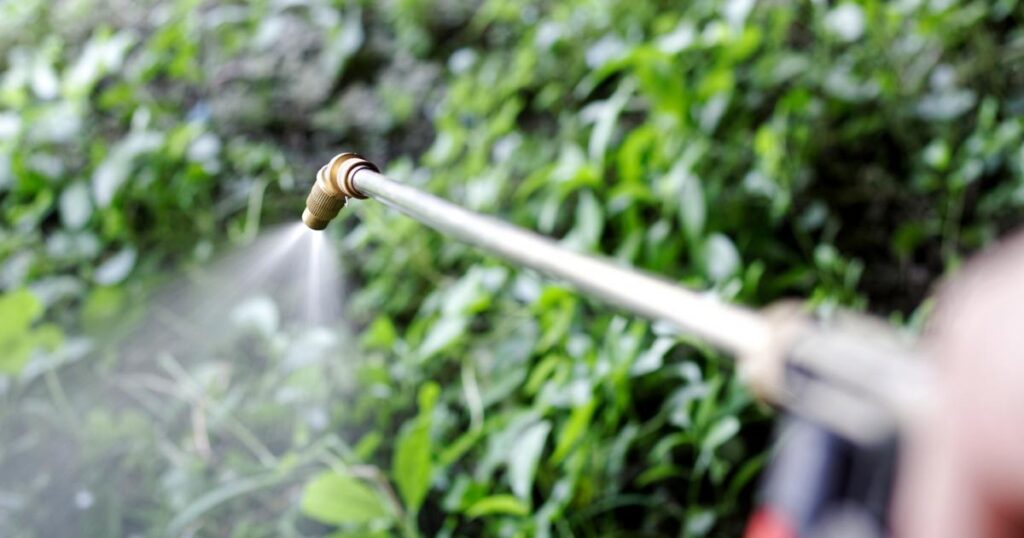Weed Control Saskatoon: Keeping Your Lawn Free from Pesky Weeds

Maintaining a beautiful, lush green lawn requires proper care and attention. One of the biggest challenges homeowners face is weed control and make weed free lawn. Weeds can quickly invade your lawn, stealing nutrients and sunlight from your grass, resulting in an unsightly and unhealthy yard.
In this guide, we will explore effective methods tailored explicitly for weed control saskatoon, focusing on the unique climate and conditions in the area. So, if you want to keep your lawn weed-free and thriving, read on!
Table of Contents
- Weed Control Saskatoon: A Comprehensive Guide
- Effective Weed Control Methods for Saskatoon
- Frequently Asked Questions (FAQs)
- How often should I mow my lawn to control weeds?
- Can I use salt to control weeds on my lawn?
- Are there any natural alternatives to chemical weed control?
- How long does it take for herbicides to work on weeds?
- Can weeds be eradicated from my lawn?
- Can I use weed and feed products to control weeds in Saskatoon?
- Conclusion
Weed Control Saskatoon: A Comprehensive Guide
What is Weed Control?
Weed control refers to managing and preventing unwanted plants, commonly known as weeds, in a designated area, such as a lawn or garden. It involves various techniques and strategies to eliminate or suppress the growth of weeds, allowing desired plants to flourish.
Understanding the Importance of Weed Control in Saskatoon
Saskatoon’s climate and soil conditions make it susceptible to the growth of certain weed species. These weeds can be aggressive and outcompete your desired plants, leading to a decline in your lawn’s overall health and appearance. Effective weed control is crucial to maintain a vibrant, weed-free landscape in Saskatoon.

Common Weed Species in Saskatoon
To effectively combat weeds, it’s important to familiarize yourself with the common weed free species found in Saskatoon. Some of the prevalent weeds in the area include:
Dandelion (Taraxacum officinale): Dandelions are perennial weeds with bright yellow flowers and puffball-like seed heads. They spread rapidly and can quickly take over your lawn if not controlled.
Canada Thistle (Cirsium arvense): Canada thistle is a perennial weed with spiny leaves and purple flowers. It spreads through an extensive root system and can be challenging to eradicate.
Creeping Bellflower (Campanula rapunculoides): Creeping bellflower is a perennial weed with purple-blue bell-shaped flowers. It spreads through underground rhizomes and can quickly invade your lawn.
Common Chickweed (Stellaria media): Common chickweed is an annual weed with small white flowers. It thrives in moist and shady areas, often forming dense lawn mats.
Effective Weed Control Methods for Saskatoon
Now that we understand the importance of weed control and the common weed species in Saskatoon, let’s explore effective methods to keep your lawn free from pesky weeds.
Cultural Weed Control
Cultural weed control involves promoting a healthy lawn, making it less susceptible to weed growth. Here are some cultural weed control techniques to consider:
Mowing Height: Maintain your lawn at a 2.5 to 3 inches height. Taller grass shades the soil, preventing weed seeds from germinating.
Proper Watering: Water deeply and infrequently to encourage deep root growth in your grass. This will help your lawn outcompete weeds for resources.
Aeration: Regularly aerate your lawn to improve soil drainage and reduce weed growth.
Overseeding: Overseed your lawn with high-quality grass seed to fill bare patches and crowd out weeds.
Fertilization: Use a balanced fertilizer to provide essential nutrients to your lawn, promoting healthy growth and competitiveness against weeds.
Manual Weed Control
Manual weed control may sometimes be necessary to tackle stubborn weeds. Here’s how you can manually remove weeds from your lawn:
Hand Pulling: Hand Pulling is an effective method for small weed populations. Remove the entire weed, including the roots, to prevent regrowth.
Weeding Tools: Utilize tools such as weed pullers, hand trowels, or hoes to assist in removing weeds. These tools make it easier to extract weeds with deep roots.
Regular Inspections: Regularly inspect your lawn for weed growth, and promptly remove any weeds before they have a chance to spread.
Chemical Weed Control
When cultural and manual methods aren’t sufficient, chemical weed control can be employed. It involves the use of herbicides to target and eliminate weeds. Here are some considerations for chemical weed control:
Selective Herbicides: Selective herbicides target specific weed species while sparing desirable plants. Read and follow the label instructions carefully for safe and effective use.
Pre-Emergent Herbicides: Pre-emergent herbicides create a barrier in the soil, preventing weed seeds from germinating. Apply these herbicides before weed seedlings emerge.
Post-Emergent Herbicides: Post-emergent herbicides are used to control existing weeds. They are applied directly to the weed’s foliage and work by disrupting essential plant processes.
Herbicide Safety: When using herbicides, always prioritize safety. Wear protective clothing, follow the recommended application rates, and keep children and pets away from treated areas.
Organic Weed Control
Organic weed control options are available if you prefer natural and eco-friendly methods. Here are some organic weed control techniques you can try:
Mulching: Apply a layer of organic mulch, such as wood chips or straw, to suppress weed growth and conserve soil moisture.
Hand Digging: Use a garden trowel or hand fork to dig out weeds manually. This method is particularly effective for isolated weed patches.
Vinegar Solution: Mix white vinegar, salt, and dish soap to create a homemade weed killer. Spray this solution directly on the weed-free lawn foliage, avoiding contact with desirable plants.
Frequently Asked Questions (FAQs)
How often should I mow my lawn to control weeds?
Mowing your lawn regularly is recommended, aiming for a height of 2.5 to 3 inches. Adjust your mowing frequency based on the growth rate of your grass.
Can I use salt to control weeds on my lawn?
While salt can effectively kill weeds, it also harms the surrounding soil and desirable plants. It’s best to avoid using salt as a weed control method.
Are there any natural alternatives to chemical weed control?
Yes, organic weed control methods such as mulching and hand digging can effectively manage weeds without using chemicals.
How long does it take for herbicides to work on weeds?
The time it takes for herbicides to work on weeds can vary depending on the type of herbicide and weed species. It’s important to follow the instructions provided by the manufacturer.
Can weeds be eradicated from my lawn?
While it may be challenging to eradicate all weeds from your lawn, consistent weed control practices can significantly reduce their presence and keep them under control.
Can I use weed and feed products to control weeds in Saskatoon?
Weed and feed products can be effective in controlling weeds in Saskatoon. However, selecting products specifically formulated for the local weed species is essential and following the application instructions is critical.
Conclusion
Maintaining a weed-free lawn in Saskatoon requires a combination of cultural, manual, and, if necessary, chemical or organic weed control methods. By implementing these strategies and staying vigilant, you can keep pesky weeds at bay, allowing your lawn to thrive and showcase its true beauty.
Remember to choose the methods that align with your preferences and environmental values, and always follow the recommended practices for a healthy and vibrant lawn.






